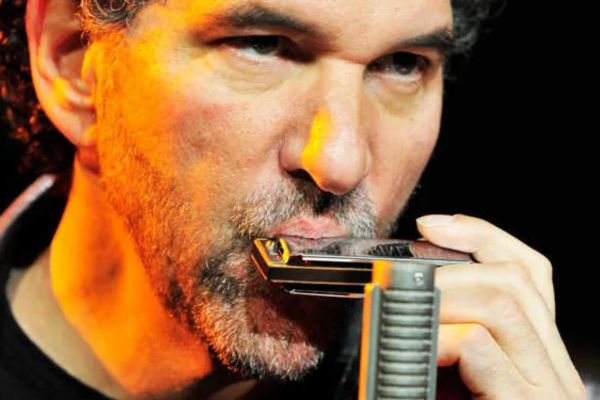Maintaining your harmonica is crucial for ensuring its longevity and optimal performance. As a beginner, learning how to care for your harmonica can seem daunting, but with the right tips and practices, you can keep your instrument in top condition. Based on my 15 years of experience in playing and maintaining harmonicas, I’ve compiled a comprehensive guide to harmonica maintenance for beginners. This guide will cover essential maintenance tips, cleaning methods, and common issues you may encounter.
Related search term: Best Harmonica for Beginners, Harmonica Maintenance for Beginners,…
Why Harmonica Maintenance for Beginners is Important
Daily Maintenance Tips
1. Keep Your Harmonica Dry
After each session, make sure to remove any moisture from your harmonica. Moisture can cause rust and damage the reeds. Gently tap your harmonica against your palm to expel any excess saliva. You can also use a dry, soft cloth to wipe the exterior and the mouthpiece.
2. Use a Harmonica Case
Storing your harmonica in a case protects it from dust and accidental damage. Many harmonicas come with their own cases, but you can also purchase one separately. A good case keeps your harmonica safe from external elements and reduces the risk of physical damage.
3. Avoid Eating or Drinking Before Playing
Food particles and sugary drinks can easily get into the harmonica and stick to the reeds. This not only affects the sound quality but also makes cleaning more difficult. Brush your teeth or rinse your mouth before playing to prevent residue from entering the instrument.
Weekly Maintenance Tips
1. Regular Cleaning
Weekly cleaning helps remove buildup that daily maintenance might miss. Disassemble your harmonica carefully, following the manufacturer’s instructions. Use a soft brush or a toothpick to gently remove any debris between the reeds and plates. Be cautious not to damage the delicate parts.
2. Soaking and Rinsing
For a deeper clean, soak your harmonica in lukewarm water with a bit of mild soap. Avoid using hot water, as it can warp the reeds and comb. After soaking, rinse thoroughly with clean water and allow it to air dry completely before reassembling.
3. Inspect for Damage
Regularly check for any signs of wear or damage. Look for bent reeds, cracks in the comb, or loose screws. Addressing these issues promptly can prevent further damage and ensure your harmonica remains in good playing condition.

Monthly Maintenance Tips
1. Reed Adjustment
Over time, reeds can become misaligned or develop tuning issues. Using a small, specialized tool, gently adjust the reeds to ensure they are aligned and respond correctly. This task requires a bit of practice, so take your time and be patient.
2. Lubricating the Slide (for Chromatic Harmonicas)
If you play a chromatic harmonica, the slide mechanism needs occasional lubrication to function smoothly. Use a small amount of harmonica-specific oil on the slide to keep it moving freely. Avoid using too much oil, as it can attract dust and dirt.
3. Professional Servicing
Consider taking your harmonica to a professional for a thorough check-up and tuning. Professionals have the expertise and tools to address complex issues and can provide valuable insights into maintaining your instrument.
Common Harmonica Maintenance Issues
1. Rusty Reeds
Rust can form on the reeds due to moisture. To prevent rust, ensure your harmonica is always dry before storing it. If rust does develop, use a fine steel wool or a specialized reed tool to gently remove it. Regular maintenance and proper storage are key to preventing rust.
2. Stuck or Broken Reeds
Reeds can get stuck due to debris or become damaged from improper playing techniques. If a reed is stuck, carefully disassemble the harmonica and clean around the reed. For broken reeds, you may need to replace them or seek professional repair.
3. Air Leaks
Air leaks can occur if the harmonica is not assembled correctly or if there are cracks in the comb. Check that all screws are tightened properly and that the comb is intact. If you find any cracks, you might need to replace the comb.

Personal Insights and Experience
From my personal experience, the key to effective harmonica maintenance is consistency. Regularly cleaning and inspecting your harmonica prevents minor issues from becoming major problems. Additionally, investing in quality cleaning tools and products can make the maintenance process easier and more efficient.
I’ve found that setting aside a specific time each week for harmonica maintenance helps me stay disciplined. For example, Sunday evenings are my dedicated maintenance time, where I thoroughly clean and inspect all my harmonicas. This routine ensures that my instruments are always ready to produce the best sound possible.
Another tip is to keep a maintenance log. Documenting when you cleaned or adjusted your harmonica helps track its condition and identify any recurring issues. This proactive approach has saved me from unexpected repairs and has kept my harmonicas in optimal playing condition.

Harmonica maintenance for beginners may seem overwhelming at first, but with regular practice and attention, it becomes a simple and rewarding routine. By following these tips and incorporating them into your harmonica care regimen, you can ensure your instrument remains in excellent condition, providing you with beautiful music for years to come.
Remember, the key to successful maintenance is consistency and care. Treat your harmonica with respect, and it will reward you with reliable performance and a rich, melodious sound. Happy playing!



This is a great guide for beginners! I learned a lot from your tips and insights. I’m definitely going to start taking better care of my harmonica.
How often do you recommend cleaning your harmonica?
I highly recommend this harmonica cleaning kit. It has everything you need to keep your harmonica in top condition.
I love playing the harmonica! It’s such a versatile instrument.